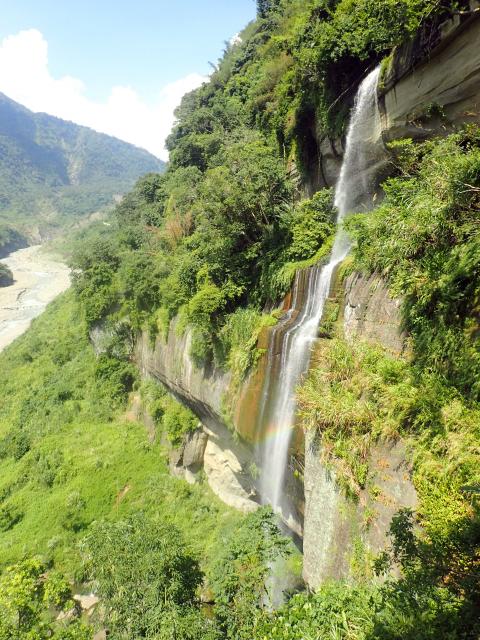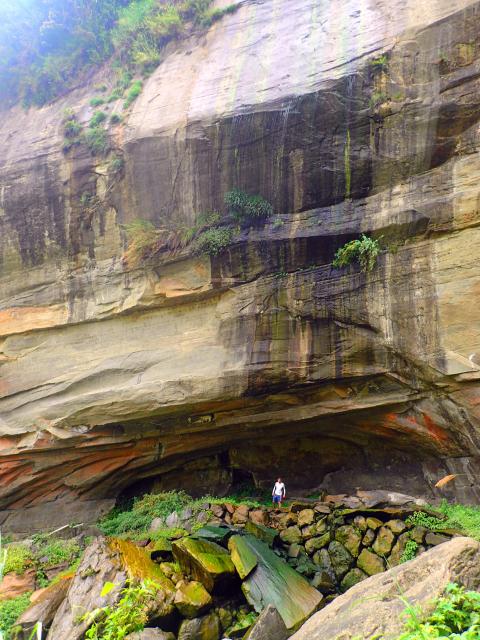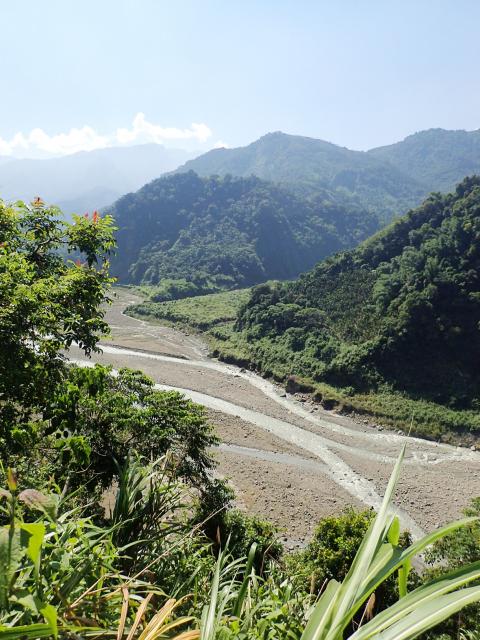Perhaps I’m preaching to the converted, but for those fresh arrivals still unaware of the dangers they face, Taiwan has an uncanny knack of snaring foreign visitors, bewitching them with its incredible beauty, rich traditional culture and quirky unpredictability, and refusing to let them leave without a struggle.
Before I first arrived in 1993, the exotic and often slightly mysterious-sounding places described in my already dog-eared copy of Lonely Planet Taiwan were almost as strong an attraction as the prospect of teaching English and earning some much-needed cash to further my travels in the Far East. The original intention was to stay for maybe six months, and scoot around some of the more intriguing places described in the guide. I’d save some money, learn a few words of the local lingo and then get lost in the vastness of China for a couple of months before returning to London to find a proper job.
Needless to say, my plan didn’t work as expected, and almost 25 years later I’m still here, still teaching and, above all, still exploring. It’s an extraordinary, if slightly unnerving, fact that Taiwan, although just a small island, has a virtually inexhaustible list of things to do, places to discover, experiences to experience. Almost a quarter of a century after arriving, I’m still finding remarkable, occasionally astonishing, places that were unknown to me until just months or even weeks ago. Taiwan is a (benign) Pandora’s Box for explorers.

Photo: Richard Saunders
In this little weekly piece I’d like to introduce a selection of the many places, sights and experiences I’ve been lucky enough to enjoy over my many memorable years here. Hopefully, my experiences will encourage others to explore Taiwan’s towns, temples, mountains and gorges for themselves. The only pre-requisite to becoming an explorer here is a genuine respect for Nature and the local culture, as well as a healthy dose of common sense.
Let me kick off with the place that first really captured my imagination, back in 1992. Trapped in a boring clerical position at a music publisher’s office in London’s Oxford Street, I’d escape during my lunchtimes into the travel guides of a nearby bookshop. One day I stumbled across a guidebook to Taiwan (the only one in those days), and was especially smitten by the description of a mountain resort, in the central county of Yunlin, called Caoling (草嶺). Near the resort were places with names such as ‘Lost Soul Valley’ (斷魂谷) and ‘Spring and Autumn Cliffs’ (斷崖春秋) that piqued my interest. Luckily I visited them both the very next summer (my first in Taiwan) as those last two places were lost forever on Sept. 21 1999, when a magnitude 7.2 earthquake — today known as the 921 Earthquake — caused a vast landslide, burying them, and killing several people living nearby.
Thankfully Caoling village lay out of the path of the falling mountainside, and to this day it remains (in my humble opinion) one of Taiwan’s loveliest weekend mountain retreats. Right below it lies the beautiful Water Curtain Cave (水濂洞), the place that intrigued me most of all during my book-reading lunchtimes back in London all those years ago.

Photo: Richard Saunders
The Water Curtain Cave is not one but two caves, behind a lofty 60-meter-high waterfall. It can be a tad underwhelming during the winter dry season, but this time of year it’s returning back to full, boisterous life with the arrival of the plum rains, while the oppressive summer heat is still hopefully a month or so away.
The trail from Caoling village down to the foot of Water Curtain Cave is only a few kilometers each way, but allow a half day to enjoy its many attractions at leisure. The walk starts with a leisurely stroll downhill along the lower of the two main streets through the village, passing a store on the right that doubles as the village gas station, selling fuel to grateful scooter riders by the can — it’s helped me out of a tight situation more than once over the years.
At the bottom the road ends at a magnificent viewpoint over the gorge of the Clearwater River (清水溪). A signposted trail here descends steps through a plantation of bitter tea oil trees (the oil pressed from the fruit of these trees is a popular local specialty). Soon the trail enters the Enchanted Valley (幽情谷), a small defile cut through the sandstone by the cascading stream as it rushes towards the head of the great waterfall below. Just before reaching the head of Water Curtain Cave the trail veers left, uphill, then descends a long and very steep flight of iron steps. At the bottom a trail on the right leads behind the small upper cave, right below the lip of the waterfall.

Photo: Richard Saunders
A series of remarkably engineered wooden steps (rebuilt just two years or so ago after a typhoon washed away the original walkway) negotiates a way down the sheer cliffs of the gorge, passing a pockmarked cliff face called the Beehive Rock (蜂巢石), a balancing boulder crowning it the Frog Rock (青蛙石) and the crack-like Marvelous Cave (奇妙洞), through which the thin and lithe could once walk through to the far side, before it was partially filled by typhoon rockfalls several years back.
At the bottom, the trail veers right along the foot of the cliffs and enters the huge overhang at the base of Water Curtain Cave. It’s a remarkable experience (and a rare one in Taiwan), standing behind the falling water, and a great place to pause, enjoy the cool downdraft created by the falling waters and take a rest before contemplating the long climb back uphill to Caoling village.
Richard Saunders is a classical pianist and writer who has lived in Taiwan since 1993. He’s the founder of a local hiking group, Taipei Hikers, and is the author of six books about Taiwan, including Taiwan 101 and Taipei Escapes. Visit his Web site at www.taiwanoffthebeatentrack.com.

Most heroes are remembered for the battles they fought. Taiwan’s Black Bat Squadron is remembered for flying into Chinese airspace 838 times between 1953 and 1967, and for the 148 men whose sacrifice bought the intelligence that kept Taiwan secure. Two-thirds of the squadron died carrying out missions most people wouldn’t learn about for another 40 years. The squadron lost 15 aircraft and 148 crew members over those 14 years, making it the deadliest unit in Taiwan’s military history by casualty rate. They flew at night, often at low altitudes, straight into some of the most heavily defended airspace in Asia.

Taiwan’s democracy is at risk. Be very alarmed. This is not a drill. The current constitutional crisis progressed slowly, then suddenly. Political tensions, partisan hostility and emotions are all running high right when cool heads and calm negotiation are most needed. Oxford defines brinkmanship as: “The art or practice of pursuing a dangerous policy to the limits of safety before stopping, especially in politics.” It says the term comes from a quote from a 1956 Cold War interview with then-American Secretary of State John Foster Dulles, when he said: ‘The ability to get to the verge without getting into the war is

Many people in Taiwan first learned about universal basic income (UBI) — the idea that the government should provide regular, no-strings-attached payments to each citizen — in 2019. While seeking the Democratic nomination for the 2020 US presidential election, Andrew Yang, a politician of Taiwanese descent, said that, if elected, he’d institute a UBI of US$1,000 per month to “get the economic boot off of people’s throats, allowing them to lift their heads up, breathe, and get excited for the future.” His campaign petered out, but the concept of UBI hasn’t gone away. Throughout the industrialized world, there are fears that

Like much in the world today, theater has experienced major disruptions over the six years since COVID-19. The pandemic, the war in Ukraine and social media have created a new normal of geopolitical and information uncertainty, and the performing arts are not immune to these effects. “Ten years ago people wanted to come to the theater to engage with important issues, but now the Internet allows them to engage with those issues powerfully and immediately,” said Faith Tan, programming director of the Esplanade in Singapore, speaking last week in Japan. “One reaction to unpredictability has been a renewed emphasis on